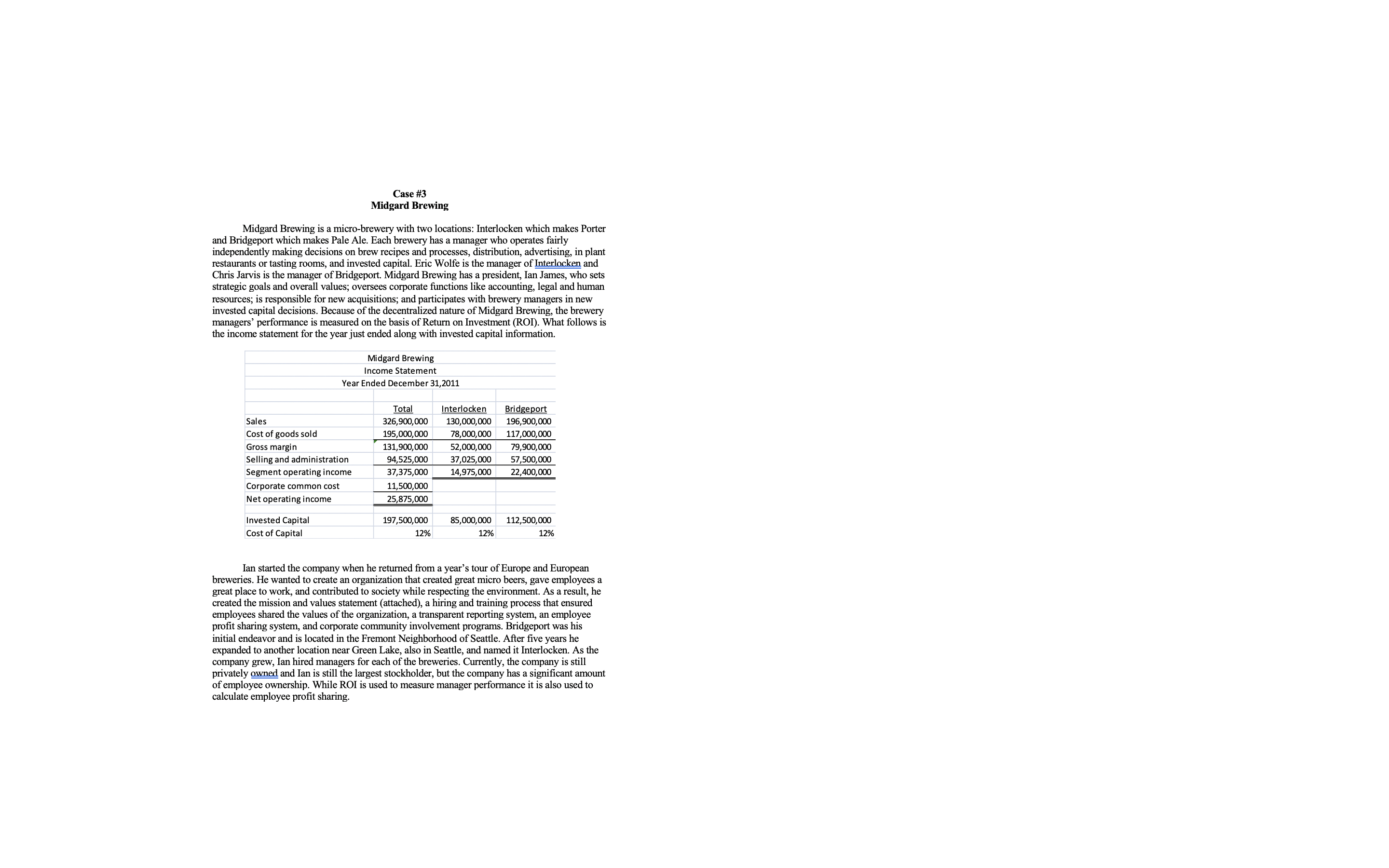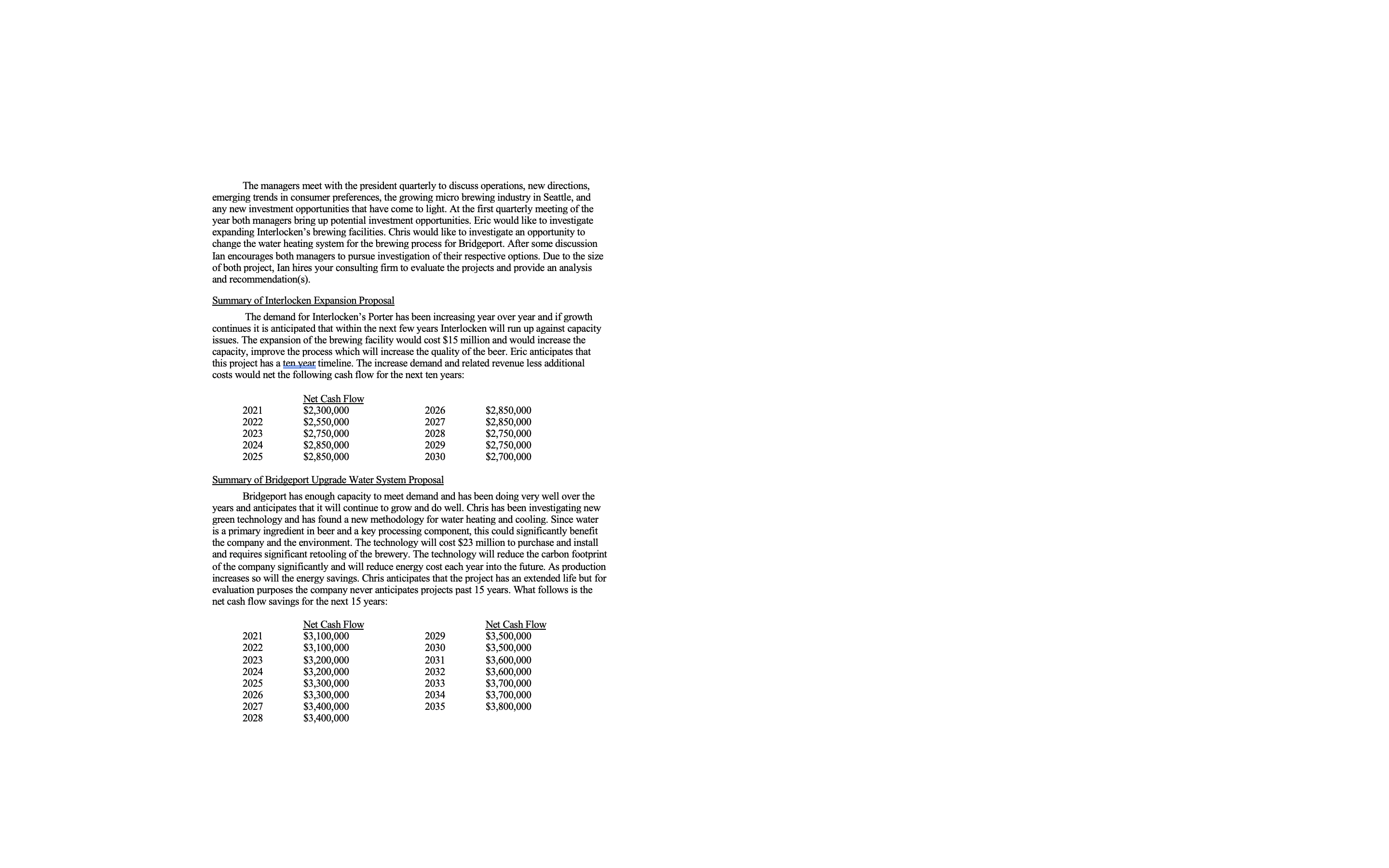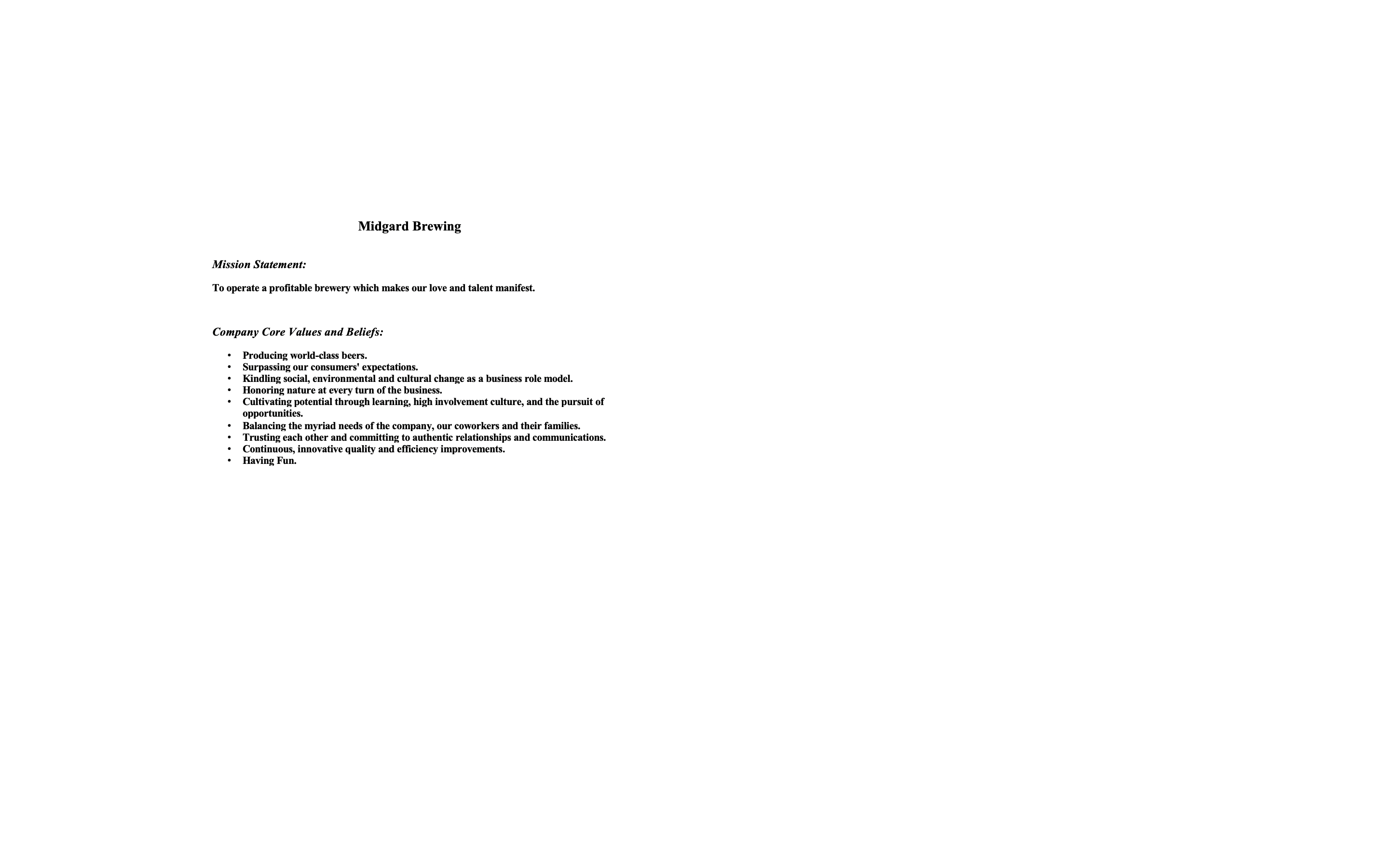Question
1.Evaluate both investment opportunities using the net present value method. For simplicity, do not consider taxes. You may also want to evaluate the investment opportunities
1.Evaluate both investment opportunities using the net present value method. For simplicity, do not consider taxes. You may also want to evaluate the investment opportunities using other capital investment analysis methods (IRR, Payback and Discounts Payback).
2.While preparing your final report, you present a draft of your findings (question 1 above) to Eric and Chris. Both managers are interested to also understand how these projects might affect Return on Investment (ROI). You agree to update your evaluation by including ROI calculations for the next five years. Based on discussion with the managers you learn that Midgard defines "investment" in the ROI calculation as the year end book value of the investment.
3.As part of your analysis, you explore how the various constituents might respond to the analysis you have prepared. Discuss the factors that might be important to each group (customers, employees, managers, majority owner). Midgard Brewing has substantial employee ownership and employees participate in profit sharing, employees are trained on reading and evaluating Midgard's financial information. Further, major decisions are vetted before the employees. What potential conflicts might arise and how might each group respond to these proposals?
4.Write final recommendation to Ian related to the proposed investments? Include any other recommendations you might have for Ian and Midgard. Explain. This should be in the form of a consultant letter (e.g., executive summary).



Case #3 Midgard Brewing Midgard Brewing is a micro-brewery with two locations: Interlocken which makes Porter and Bridgeport which makes Pale Ale. Each brewery has a manager who operates fairly independently making decisions on brew recipes and processes, distribution, advertising, in plant restaurants or tasting rooms, and invested capital. Eric Wolfe is the manager of Interlocken and Chris Jarvis is the manager of Bridgeport. Midgard Brewing has a president, Ian James, who sets strategic goals and overall values; oversees corporate functions like accounting, legal and human resources; is responsible for new acquisitions; and participates with brewery managers in new invested capital decisions. Because of the decentralized nature of Midgard Brewing, the brewery managers' performance is measured on the basis of Return on Investment (ROI). What follows is the income statement for the year just ended along with invested capital information. Midgard Brewing Income Statement Year Ended December 31,2011 Sales Cost of goods sold Gross margin Selling and administration 94,525,000 Segment operating income 37,375,000 Total Interlocken Bridgeport 326,900,000 130,000,000 196,900,000 195,000,000 78,000,000 117,000,000 131,900,000 52,000,000 79,900,000 37,025,000 57,500,000 14,975,000 22,400,000 Corporate common cost 11,500,000 Net operating income 25,875,000 Invested Capital 197,500,000 85,000,000 112,500,000 Cost of Capital 12% 12% 12% Ian started the company when he returned from a year's tour of Europe and European breweries. He wanted to create an organization that created great micro beers, gave employees a great place to work, and contributed to society while respecting the environment. As a result, he created the mission and values statement (attached), a hiring and training process that ensured employees shared the values of the organization, a transparent reporting system, an employee profit sharing system, and corporate community involvement programs. Bridgeport was his initial endeavor and is located in the Fremont Neighborhood of Seattle. After five years he expanded to another location near Green Lake, also in Seattle, and named it Interlocken. As the company grew, Ian hired managers for each of the breweries. Currently, the company is still privately owned and Ian is still the largest stockholder, but the company has a significant amount of employee ownership. While ROI is used to measure manager performance it is also used to calculate employee profit sharing.
Step by Step Solution
There are 3 Steps involved in it
Step: 1

Get Instant Access to Expert-Tailored Solutions
See step-by-step solutions with expert insights and AI powered tools for academic success
Step: 2

Step: 3

Ace Your Homework with AI
Get the answers you need in no time with our AI-driven, step-by-step assistance
Get Started


